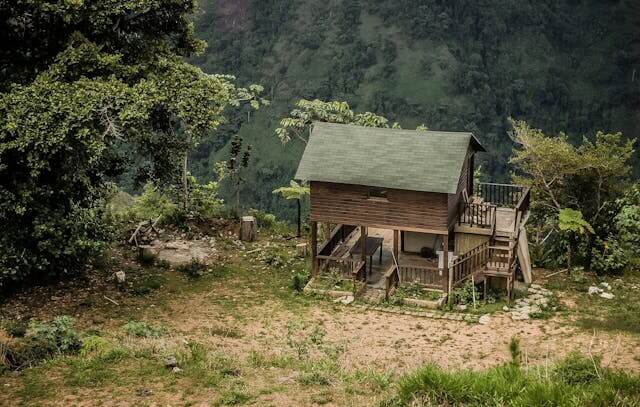Four integrated systems create off-grid functionality: power generation and storage, water collection and purification, waste management and disposal, and backup redundancy. Each system operates independently yet connects to the others — your solar panels power water pumps, your greywater irrigates gardens, your backup generator recharges batteries during cloudy weeks. Understanding how these systems interact helps you design efficient, reliable off-grid infrastructure.
Electricity / Power
Solar power dominates off-grid tiny homes for good reasons: panels have no moving parts, generate silently, require minimal maintenance, and deliver 25+ year lifespans. A typical tiny house needs 1,000-3,000 watts of solar capacity depending on appliances and lifestyle. Battery banks store excess generation for nighttime and cloudy days. Inverters convert DC battery power to AC household current. Charge controllers prevent overcharging batteries. Most systems include grid-forming inverters that create stable AC power mimicking utility grids. Wind turbines supplement solar in windy locations but need more maintenance and space. Generators provide backup during extended cloudy periods or high-demand situations.
Water Collection / Filtration
Water systems start with source selection: rainwater harvesting from your roof, drilled wells accessing groundwater, or spring collection from natural sources. Rainwater systems capture runoff through gutters into storage tanks, then filter and purify for drinking. Wells require drilling ($15-$30 per foot), casing installation, and pumping systems. Springs need careful testing for contaminants and consistent flow. Storage capacity should provide 1-2 weeks supply — approximately 500-1,000 gallons for two people. Filtration removes sediment, bacteria, viruses, and chemicals through multi-stage systems: sediment pre-filters, activated carbon filters, and UV sterilization or reverse osmosis for drinking water.
Waste / Sanitation
Waste management separates into blackwater (toilet waste) and greywater (sinks, showers). Composting toilets eliminate blackwater's biggest challenge by converting human waste into compost through aerobic decomposition. Popular brands like Nature's Head ($1,000-$1,200) and Sun-Mar ($1,500-$2,500) require minimal maintenance — empty solids every 4-6 weeks for two people, add composting medium weekly. Greywater systems filter sink and shower water for reuse in irrigation or toilet flushing. Simple systems use branched drain pipes to distribute greywater directly to landscaping. Advanced systems include filtration and treatment for broader reuse.
Backup / Redundancy
Backup systems prevent single-point failures from shutting down your home. Generator backups (propane or diesel) recharge batteries during extended cloudy weather. Extra water storage provides buffer during dry seasons or equipment failures. Redundant filtration components ensure water stays safe if primary filter fails. Battery bank sizing includes extra capacity beyond daily needs. Most off-grid tiny house owners maintain backup supplies: extra filters, spare pump parts, bulking agent for composting toilets, and fuel for generators.
